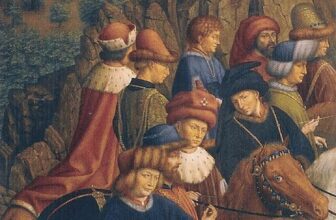Why was Johannes Vermeer in debt?
The Life and Financial Struggles of Johannes Vermeer: Art, Debt, and Legacy
Johannes Vermeer, often celebrated as one of the most remarkable painters of the Dutch Golden Age, created a legacy of masterful artworks that continue to captivate audiences worldwide. Known for his exquisite attention to detail, innovative use of light, and serene domestic scenes, Vermeer’s art reflects a deep connection to 17th-century Dutch society. Despite his artistic achievements, Vermeer’s life was marked by financial struggles that ultimately left him in debt. This blog explores the factors that contributed to Vermeer’s financial troubles, delves into his early life, and examines the circumstances surrounding his untimely death.
Johannes Vermeer was born in Delft, Netherlands, in October 1632, during a period of prosperity and cultural flourishing in the Dutch Republic. He was the second child of Reijnier Janszoon and Digna Baltens, a family of modest means. Vermeer’s father worked as a silk weaver and later as an art dealer and innkeeper, roles that likely exposed young Vermeer to the art world at an early age.
Little is known about Vermeer’s formal education or artistic training, but it is widely believed that he apprenticed with a local painter, possibly Carel Fabritius or another Delft artist. By 1653, Vermeer had established himself as an artist and joined the Guild of Saint Luke, a professional organization for painters and artisans in Delft. That same year, he married Catharina Bolnes, the daughter of a wealthy Catholic family, and converted to Catholicism, a significant step given the predominantly Protestant environment of Delft.
Vermeer’s marriage to Catharina may have provided some financial stability initially, but it also introduced new challenges. The couple would eventually have 15 children, 11 of whom survived into adulthood. Supporting such a large family placed considerable strain on Vermeer’s finances, especially given the unpredictable nature of the art market.
Vermeer’s body of work, consisting of fewer than 40 paintings, showcases his unparalleled ability to capture quiet moments of daily life. His masterpieces, such as Girl with a Pearl Earring, The Milkmaid, and View of Delft, reflect his meticulous technique, use of vibrant colors, and mastery of light and shadow.
Unlike many of his contemporaries, Vermeer did not produce paintings in large quantities. He worked slowly and carefully, often spending months or even years on a single piece. This painstaking approach limited his output and, consequently, his income. Vermeer’s reliance on a small group of patrons, including Pieter van Ruijven, further constrained his financial opportunities. While Van Ruijven’s patronage provided some stability, it was insufficient to sustain Vermeer’s growing family and household expenses.
Moreover, the art market of the Dutch Golden Age was highly competitive. While demand for paintings was strong, artists had to contend with fluctuating market trends and economic downturns. Vermeer’s preference for creating intimate, domestic scenes may have appealed to a niche audience, but it limited his broader market appeal.
Several factors contributed to Vermeer’s financial struggles, culminating in significant debt by the time of his death. One key issue was the economic decline that affected the Dutch Republic during the latter half of the 17th century. The Franco-Dutch War (1672–1778), combined with political instability and declining trade, created widespread economic hardship. Known as the “Rampjaar” or “Disaster Year,” 1672 was particularly devastating, as foreign invasions and domestic unrest disrupted commerce and diminished the wealth of patrons who supported the arts.
Vermeer’s reliance on the art market for income made him particularly vulnerable to these economic conditions. Additionally, his role as an art dealer, which supplemented his income as a painter, likely suffered during this period. With fewer buyers and declining prices for art, Vermeer struggled to meet his financial obligations.
Another contributing factor was the debt inherited from his parents. Vermeer’s father, Reijnier, had accumulated debts related to his innkeeping and art dealing ventures. When Reijnier passed away in 1652, Vermeer assumed responsibility for these debts, adding to his financial burden.
By the early 1670s, Vermeer’s financial situation had become dire. In 1672, the economic and social turmoil of the Disaster Year compounded his struggles, leaving him unable to provide for his family. Vermeer’s health deteriorated under the stress, and he passed away in December 1675 at the age of 43. His wife, Catharina, later described his death as being brought on by “a frenzy” caused by financial pressures.
Following Vermeer’s death, Catharina was left to manage his debts and support their children. She petitioned for bankruptcy, stating that Vermeer’s modest income as a painter and art dealer had been insufficient to cover the family’s expenses. Many of Vermeer’s paintings were sold to pay off creditors, and his artistic legacy remained relatively obscure for centuries.
Vermeer’s reputation as a master painter was not fully established until the 19th century when art historians and collectors rediscovered his work. The meticulous craftsmanship and timeless beauty of his paintings earned him a place among the greatest artists in history. Today, Vermeer’s works are celebrated for their ability to capture the quiet elegance of everyday life and the human experience.
While Vermeer’s life was marked by financial difficulties, his art endures as an evident to his extraordinary talent and vision. His story serves as a poignant reminder of the challenges faced by artists who, despite their genius, often struggle to achieve financial stability. Vermeer’s journey from relative obscurity to international acclaim underscores the enduring power of art to transcend time and circumstance, inspiring generations to come.




